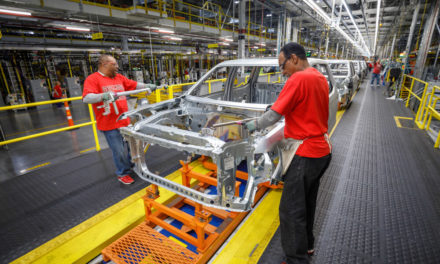The Lord was standing beside a wall built with a plumb line, with a plumb line in his hand.
— Amos 7:7
YOUGHAL, IRELAND – Even the Lord Himself needed a plumb line.
A plumb line is simply a string with a heavy weight tied to its end. Gravity tugs the weight so that the line, if it could continue, would go through the center of the Earth.
The ancients discovered, perhaps 4,000 years ago, that if you wanted a building to stay up, you had to put it up straight. And for that, you needed a plumb line.
No mathematician, government, or genius PhD can improve on a plumb line. That is, they can’t make it any plumber or truer.
Modern, scientific engineering can’t make it more serviceable by inflating it by 2% in one direction or the other. Nor can they twist it to provide full employment for masons.
Things that are not “plumb” are inherently unstable. Gravity works on them like a campaign slogan on a weak mind.
The Leaning Tower of Pisa in Italy, for example, is a Wonder of the Medieval World because it has refused to fall down for so long (it is now supported by long cables).
Leaning Money
But nothing is straight or true in the money world. And last week, things went even further askew.
The Dow added 243 points on Friday … after a week of dizzy increases and new all-time highs.
But the economy beneath it buckled and heaved. Bloomberg reports on global trends:
Gross Domestic Product in the export-reliant Singapore shrank an annualized 3.4% in the second quarter from the previous three months, the biggest decline since 2012.
China’s growth has dropped back to levels not seen in almost three decades:
China’s economy slowed to the weakest pace since quarterly data began in 1992 amid the ongoing trade standoff with the U.S., while monthly indicators provided signs that a stabilization is emerging.
And this slowdown is not limited to Asia:
The U.K. economy probably shrank for the first time since 2012 in the second quarter, according to Bloomberg’s latest survey of economists.
The prediction for a 0.1% contraction in the three months through June marks a downgrade from the previous poll, when economists only predicted stagnation. The forecast came as the retail industry reported another drop in sales and said “the picture is bleak.”
Starve the Beast
And in the U.S., the authorities try to hold off recession with more jackass policies. Neither normal interest rates nor normal, balanced budgets will be allowed. Here’s Bloomberg again:
The U.S. budget deficit widened to $738.6 billion in the first eight months of the fiscal year, a $206 billion increase from a year earlier, despite a revenue boost from President Donald Trump’s tariffs on imported merchandise.
The shortfall was 38.8% more than the same period a year ago, the Treasury Department said in its monthly budget review released on Wednesday. So far in the fiscal year that began Oct. 1, a revenue increase of 2.3% hasn’t kept pace with a 9.3% rise in spending.
In other words, the feds threw away their plumb line years ago. Now, they’re increasing their spending about four times faster than tax receipts.
The idea motivating many conservatives since the Reagan era was to “starve the beast.”
This was the strategy undertaken by our old friend, Grover Norquist, founder and president of Americans for Tax Reform, who believed that the only way to stop the federal government from growing was to cut off its food supply.
But the beast didn’t starve. Instead, it grew stronger and more aggressive — feeding on debt. Federal debt has increased by some $11 trillion over the last decade. In this 10-year period, the feds increased debt more than all previous administrations put together.
Crooked Tower of Debt
Another selling point of Trump’s tax cut was that it would pay for itself by jazzing up growth rates. This growth, proponents argued, would result in higher tax receipts.
That didn’t happen either. Real GDP growth is running at about the same level it was during the Obama years, with a widening deficit of 5.5% of GDP.
For comparison, even at the depths of the 2008-2009 crisis, the Italian government had a deficit of only 5.2%. It has only about a 3.2% deficit now. Argentina currently has a budget gap of 5.2% — lower than the U.S.
Instead of squaring up the economy, the tax cut tilted it further. And now, both the Federal Reserve and the federal government are doing their level best to avoid straightening out federal finances.
The former cheats the plumb line with an artificially low interest rate … while the latter builds a crooked tower of debt …
Stay tuned…
Regards,
Bill
• This article was originally published by Bonner & Partners. You can learn more about Bill and Bill Bonner’s Diary right here.




